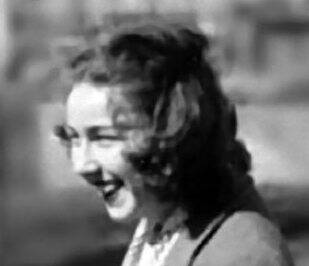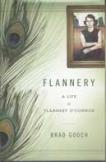Southern Expressions
Robert Giroux, Flannery O’Connor’s editor at Farrar, Straus & Giroux, thoroughly enjoyed talking about his noted author. He told me on several occasions (and always with a slight chuckle afterward) about a visit to see Flannery and her mother at their farm “Andalusia” outside Milledgeville, Ga. Rising early and wanting some coffee, he entered the kitchen, only to find Mrs. O’Connor preparing his breakfast. “Mr. Giroux,” she said, “why doesn’t Flannery write about nice people?” When Mr. Giroux tried to explain that Flannery was a nice person and that she wrote from the depths of her imagination and thus her characters actually were nice, Mrs. O’Connor would have none of this pseudo-literary psychobabble. As she left to feed the peacocks, Flannery entered with a question: “Bob, what did THE MOTHER say this morning?”
This anecdote reveals a good deal about Flannery O’Connor and her imaginative fiction, particularly the unusual (and sometimes freakish) characters in her works and the tensions brought about by the seeming omnipresence of her mother. (O’Connor’s father died at age 45 in 1941, when she was 15.) In his excellent new biography of O’Connor, Brad Gooch, professor of English at William Patterson University in New Jersey and author of a biography of Frank O’Hara, often probes the relationship between O’Connor’s life and her fiction as he highlights the various facets of O’Connor’s complex personality.
Southernly polite, standoffish, highly creative, sometimes overtly critical of others, devotedly Catholic, sardonic, witty, philosophically grounded, far-seeing and drained by the effects of lupus, which developed when she was 25 years old. She painstakingly observed the world around her: from her earliest days in Savannah, then Milledgeville, where she spent her teenage years and also went to college, to her apprenticeship at the Iowa Writers’ Workshop, then at Yaddo, the artists’ colony in Saratoga Springs, N.Y., to her brief, but important time with the Robert Fitzgerald family in Redding, Conn., before her return to Milledgeville.
O’Connor, for example, partially based her story “The Displaced Person” (1954) on a Polish family, the Matysiaks, who arrived at Andalusia in 1953 (Jan, the father, who had been incarcerated in a German labor farm in World War II; Zofia, the mother; 12-year-old, English-speaking Alfred; and his younger sister, Hedwig). With information supplied by Alfred; Gooch records the Matysiak family’s interaction with the O’Connors, especially Flannery’s mother, as well as the role played by the Rev. John Toomey, then involved in the local Catholic Resettlement Commission, and two African-American farm workers, portrayed in the story as Astor and Sulk. In addition, O’Connor looked to the Stevens family (a dairyman, employed by Mrs. O’Connor at Andalusia, his Protestant wife and two daughters) in portraying the Shortleys. In this story, when we see the widowed Mrs. McIntyre on her deathbed (no doubt a projection of Mrs. O’Connor), we are led to a private place within ourselves where we need to consider whether Mrs. McIntyre (and, by extension, ourselves) understands that we are all displaced people on this earth awaiting the glorious return of the Lord, proleptically seen in the transforming beauty of a peacock’s unfolding tail feathers.
In another life-based story, “Good Country People,” written in spite of her advancing lupus, O’Connor portrays a one-legged, unemployed female with a Ph.D. in philosophy, who has nothing to do but stay at home and irritate her mother. When a Bible salesman, Manley Pointer (does one need to highlight the significance of this name?), arrives at the Hopewell house, Joy, who has changed her name to Hulga, much to the annoyance of her mother, joins her new friend in an excursion to a nearby barn, complete with a romantic hayloft. As Manley attempts to become intimate with Joy/Hulga, even asking her to remove her prosthesis, a private part of her she has not shared with others, he reveals unexpectedly that he has a history of promiscuity and that his hollowed-out Bible contains evidence of previous conquests—condoms, raunchy playing cards and a flask of whiskey. Helpless and abandoned, Joy/Hulga needs to consider whether she should, in the future, reach out to another man to experience love—or maybe withdraw within herself because the effort to try again is simply not worth it.
Gooch’s research for this story, based on that initially done by Mark Bosco, S.J., of Loyola University Chicago, shows the importance of Erik Langkjaer, a native of Copenhagen who emigrated to the United States and worked for Harcourt Brace as a college textbook salesman. When Flannery first met Erik in April 1953, she was clearly taken with him and relished their time together, especially their drives through Baldwin County in his car. When he decided to break off their friendship and return to Europe a little over a year later, O’Connor, then using a cane, felt betrayed, as revealed in their short-lived correspondence. In early 1955, O’Connor took only four days to write this story; her intense feelings about Langkjaer quickly found their outlet. As she later said in a note to him, “I feel like if you were here we could talk about a million years without stopping.”
Perhaps, too, Joy/Hulga needed to meditate—as did O’Connor throughout her adult life—on one of Manley Pointer’s throw-away lines: “You never know when you need the word of God.” Cagey, but not too subtle in her fiction, O’Connor appreciated the works of Christian writers, philosophers and theologians, especially Louis Bouyer, Pierre Teilhard de Chardin, S.J., Yves Congar, O.P., étienne Gilson, Jean Guitton, Henri DeLubac, S.J., Jacques Maritain, François Mauriac, George Tavard, A.A., Charles Péguy, Romano Guardini and William Lynch, S.J. She had the habit in her later years of reading some of the writings of Thomas Aquinas, not seeking academic expertise (she called herself a “Thomistic hillbilly”), but as someone who took her Catholicism very seriously.
Though Gooch acknowledges this dimension of O’Connor’s spirituality, he rarely enters into a discussion of its significance; he avoids asking how these writers influenced O’Connor. What views of these writers did she understand and incorporate into her own theological perspective? It should be noted that O’Connor, who died at age 39 on Aug. 3, 1964, did not read the decrees of the Second Vatican Council, which concluded on December 8, 1965. Given this, one could well ask: What theological tenets were most important to her? In short, Gooch would have done a service to his readers to explain in greater detail O’Connor’s theological views as relating to what she read and studied and how they were manifested in her fiction, much of which seems focused on Southern expressions of the Baptist Church rather than those of the Catholic Church.
Gooch, as he acknowledges, builds on the initial investigative work done by Jean W. Cash in her Flannery O’Connor: A Life (2002). Two other biographies of O’Connor are anticipated. William Sessions, professor emeritus of English at Georgia State University in Atlanta, has announced that he is writing an O’Connor biography. Given his friendship with O’Connor and a number of her friends and acquaintances, his biography, when finished, should have those up-close moments of insight not afforded to someone who never knew his or her subject. In addition, Sally Fitzgerald, a close friend of O’Connor from their time together in Redding, gathered what many presume is an enormous amount of material on O’Connor’s life. After Fitzgerald’s death in June 2000 at age 83, no one outside the immediate family seemed to know the status of this biography. Mr. Giroux, who looked forward to editing Fitzgerald’s biography, told me in 1997 that he had never seen even a word of this work. Yet the prize-winning collection of O’Connor’s letters (The Habit of Being, 1978), edited by Fitzgerald, is clear evidence of her scholarly and devoted affection for her subject.
Such biographical attention to Flannery O’Connor leaves little doubt about her status in the American literary canon.
This article also appeared in print, under the headline “Southern Expressions,” in the March 30, 2009, issue.









